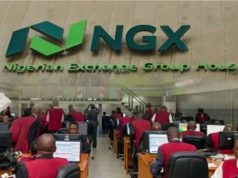By Rebecca Ellis
TUE, 03 MAY, 2022-theGBJournal | Spring has come but it has not been kind to the markets. The S&P 500’s 8.8% decline in April represents the index’s worst monthly performance since March 2020, while the Nasdaq’s 13.2% fall is its worst since October 2008. The drivers for this decline appear to be a combination of some disappointing mega-cap earnings, signs of inflation heightening fears of a Fed-induced recession, China’s COVID-19 lockdowns, and the war in Ukraine.
Growth concerns have been compounded by China’s ongoing struggles to contain COVID-19—further restrictions were announced for Beijing this weekend—as well as the impact of restrictions on the flow of Russian oil and gas on Europe’s economy.
What’s next?
The main question is whether the Fed can steer both inflation and growth closer to trend without provoking a recession. Our base case is that inflation is likely to fall from current levels. We expect growth in 2022 to be slower than last year, but not fall into recession. The strategy is to position for moderate inflation rather than recession. There are three reasons for this:
As inflation recedes, the Fed will not induce a recession.
-We have experienced a once in a century demand surge in 2021 when lockdowns eased, and consumers spent their covid savings. As that demand normalizes, inflation is normalizing – or even giving way to deflation witness the recent drop in prices for used cars and televisions.
-Inflation is about the change of prices. The year-on-year inflation rate compares price levels in a locked down economy with a normalized economy. That is a problem as prices in a locked down economy were abnormally low.
-Wage costs remain contained. Wages are up, but generally we are paying fewer people more money to make more stuff. That does not suggest strong inflation pressures from the labor force. There is yet no evidence of the second-round effects of inflation emerging – a wage cost / price spiral is notably absent.
As inflation is falling, The Fed will not feel compelled to step hard on the brakes.
US earnings have generally been solid. There have been some high-profile disappointments, of which Amazon is the latest. Overall, though, the results and guidance have been good. More than 70% of companies are beating sales estimates and 80% are beating earnings estimates. In aggregate, earnings are beating by 5.5%. The weakness is mostly in consumer segments, and in some cases reflects payback after strong growth during the pandemic. Enterprise segments are faring better. Corporate profits are on track to grow roughly 10% on nearly 12% sales growth.
China could shift from global headwind to tailwind. Reflecting the effects of COVID-19 lockdowns, we saw reduced GDP growth estimates for China for 2020 and lower full-year 2022 earnings growth forecasts. However, in the last week there has been clearer guidance from policymakers at the highest level, that supportive measures will be stepped up in terms of infrastructure investment, property sector policy easing, transport, logistics, and “healthy development” of platform companies, as well as easier monetary policy. We expect the second quarter to mark the trough in Chinese GDP and expect a sequential improvement in the second semester.
What do we do now?
We think equity markets will finish the year higher than current levels. We favour areas of the market that should outperform in an environment of higher inflation, rising rates, and elevated volatility. We think the economic and market environment is favourable for value investing or put differently investing in companies that produce tangible goods, are profitable and reward shareholders by returning capital in the form of dividends and/or share buy-backs.
Commodities have performed well historically during inflation regimes, and we think they represent an effective geopolitical hedge given the risk of further supply disruptions. We see room for another move up over the next six months.
We also believe the US dollar can continue to act as a good portfolio hedge in the near term. It is likely to benefit from safe-haven flows given geopolitical and growth uncertainties, from rising US real interest rates, and from the US’s position as a net energy exporter.
Adding exposure to defensive equity sectors like healthcare can also help reduce overall volatility. The pharmaceutical segment is traditionally relatively resilient during risk-off moves, and valuations look undemanding.
The high uncertainty we are currently experiencing can drive investors to make emotional decisions that can be detrimental to achieving their financial goals. Bear markets are notoriously unpredictable, and so are the subsequent recovery rallies. Trying to time the market by selling with the intent of getting back in “when markets settle” tends to lock in otherwise temporary losses.
Rebecca Ellis is a Personal investment advisor, based in Zurich| rebecca.ellis@pomonawealth.com|pascal.crepin@pomonawealth.com
Twitter-@theGBJournal|Facebook-The Government and Business Journal|email: gbj@govbusinessjournal.ng|govandbusinessj@gmail.com










